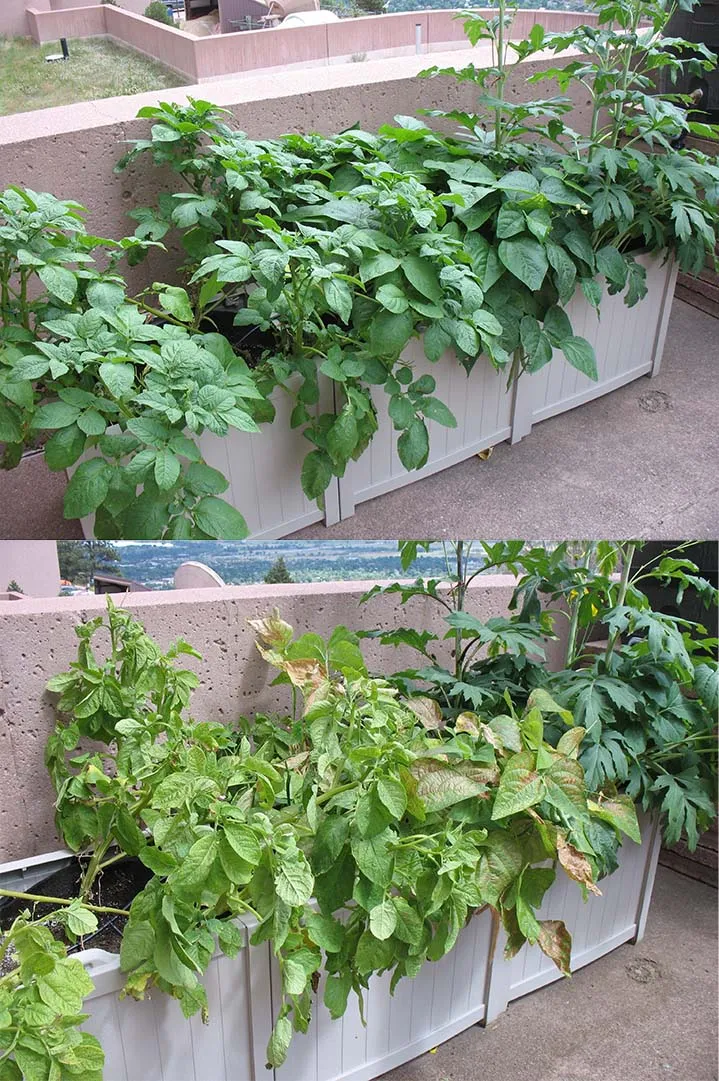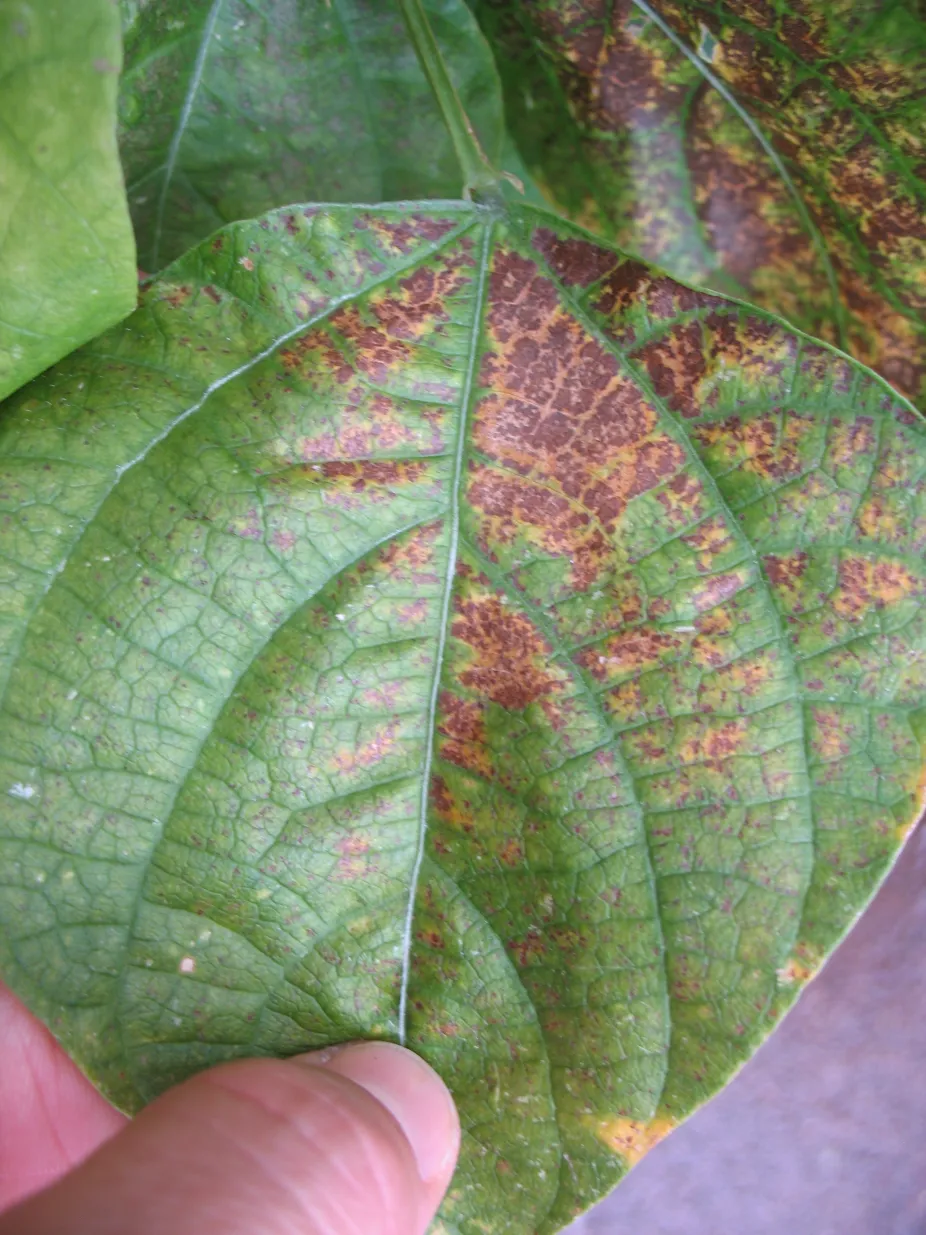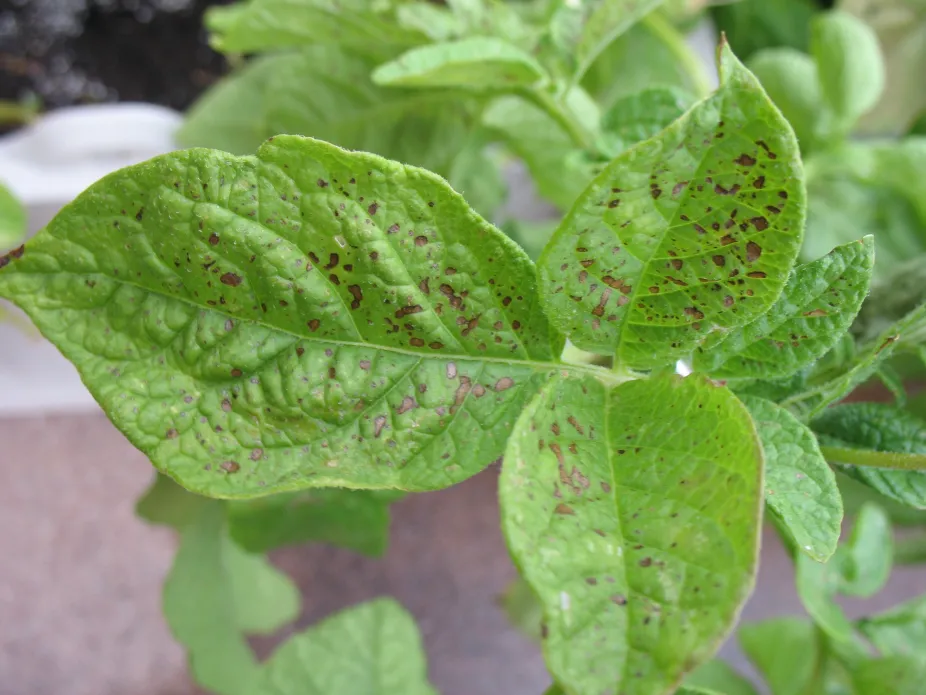How Does Ozone Damage Plants?

Ozone damage on plants at NCAR’s Mesa Lab Cafeteria Patio garden progressed rapidly over several weeks. In the top photo, taken on on August 3, 2015, there was little ozone damage on the potato (far left) and bean (center) plants, but in the bottom photo, taken on September 1, 2015, there is extensive damage.
Danica Lombardozzi/NCAR
When ozone pollution levels are high, the leaves of plants often show signs of damage. Scientists are using data collected from ozone gardens across the United States to study how ozone damages plants. In 2015, scientists in Boulder, Colorado, noticed an increase in damage on several plants in the ozone gardens at NCAR’s Mesa Lab. This moderate to severe ozone injury coincided with high ozone concentrations due to forest fires that were happening on the west coast. The notable increase in plant ozone damage raises the question: How does ozone actually damage plants?
Ozone Enters Through Pores in Leaves
Plants have microscopic pores on the bottoms of their leaves called stomata (singular: stoma). You can think of stomata as the mouths of the plant: plants open and close them to ‘breathe’. Thus, when they are open, gases in the air surrounding the plant can get inside the leaves through the stomata. Keeping stomata open is necessary so that the plants can get carbon dioxide from the air, which they turn into sugars for food during a process called photosynthesis. At the same time, however, ozone also gets inside the leaf and damages parts of the leaf cells that make the sugars. This can ultimately reduce the growth of the plant, reduce the production of wood and fruits and vegetables in timber and crop plants, and decrease the amount of carbon stored in plant tissues.
How Do Plants Protect Against Ozone Damage?
Plants are able to protect themselves from ozone damage in several ways. For example, antioxidants, like vitamin C, can protect against ozone damage, so plants with more antioxidants are less susceptible to ozone damage. Also, plants protect themselves by closing their stomata to reduce the amount of ozone getting inside their leaves. Plants close their stomata for other reasons, like when they are stressed by drought, and this also helps to protect the plant against ozone damage. Plants that have smaller and fewer stomata are typically less susceptible to ozone damage because less ozone enters the leaf.
While closing the stomata is a good short-term solution that plants use to protect against ozone damage and drought stress, closing the stomata for long periods of time also means that the plants are unable to get the carbon dioxide needed to make their food.

The extensive yellow-ringed brown patches on the top and right side of this snap bean leaf are evidence of severe ozone damage, observed on September 1, 2015.
Danica Lombardozzi/NCAR

Brown patches on these potato leaves are evidence of moderate ozone damage.
Danica Lombardozzi/NCAR
Content on this page edited from a blog post by Danica Lombardozzi, a scientist at the National Center for Atmospheric Research (NCAR). Danica works in the Terrestrial Sciences group of the Climate and Global Dynamics Laboratory, and one of her research interests is the impact of ozone on plants.
© 2020 UCAR